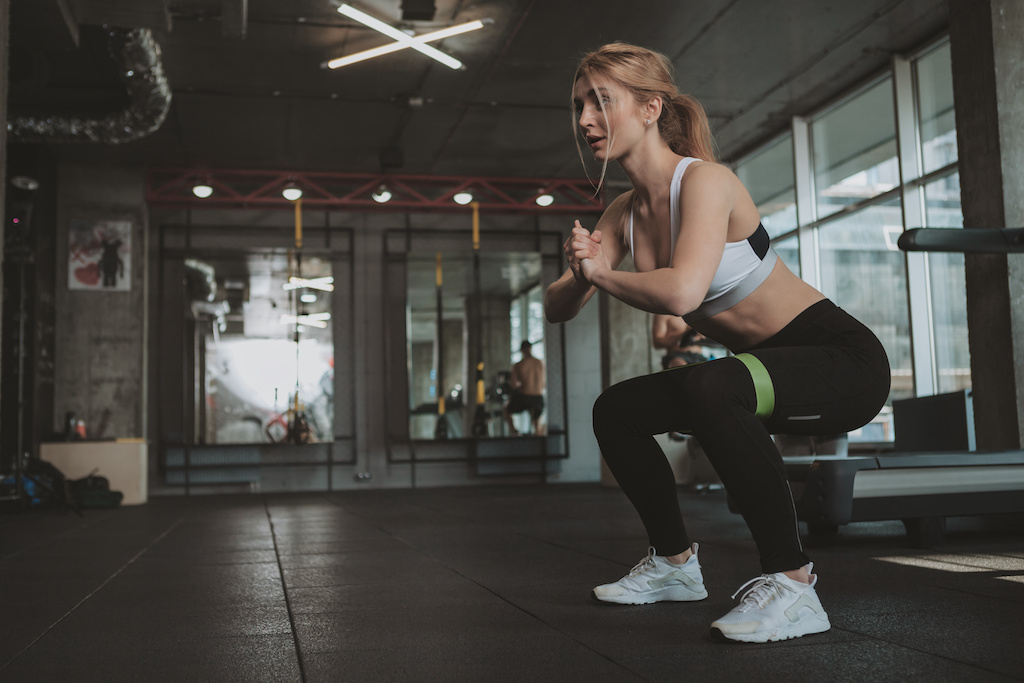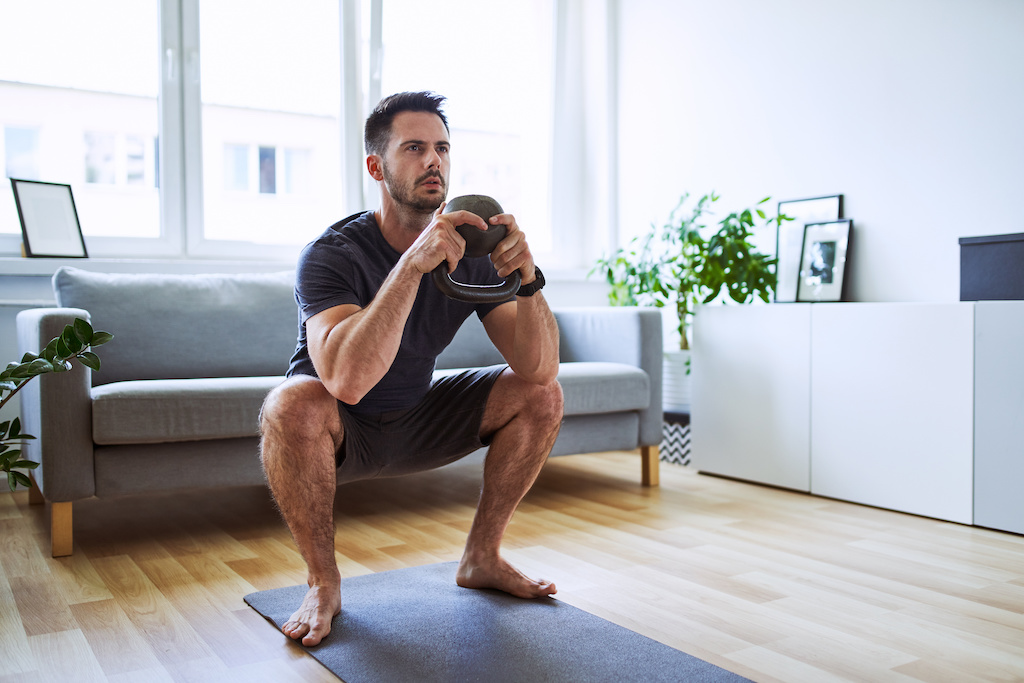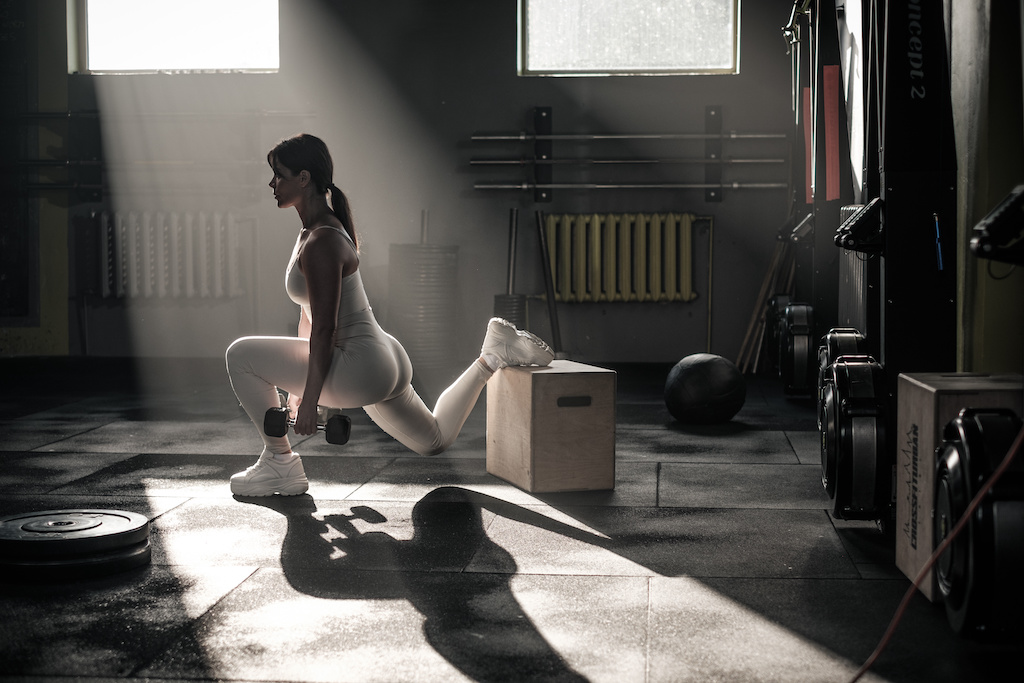To make your squats more effective and work the exact muscle you want at the exact time you want it, let’s focus on this popular fitness exercise. By breaking down each movement and adjusting your posture, you can multiply the benefits of squats while limiting the risk of injury. You will never see squats in the same way again!
The Muscles Targeted by Squats

Squats are probably one of the most popular exercises in the gym (or at home). Seemingly simple enough to perform, they allow you to build up the muscles of the lower body and more:
- The quadriceps, the main muscles targeted by these squats, located at the front of the thighs.
- The hamstrings, at the back of the thighs.
- The gluteal muscles, especially the gluteus maximus.
- The adductor magnus, on the inside of the thighs, is mobilised during the return to a standing position.
- The erector spinae muscles used to keep the back straight.
- The abdominal muscles, especially the obliques.
- The calves are engaged during the movement to stabilise the shins in a vertical position and stand up.
When squats are done in quick succession or a jumping version, they can also become a great cardio exercise. Here is a reminder of how to perform a classic squat:
- Stand with your arms outstretched in front of you and focus your eyes on a point at eye level.
- Bend your legs while contracting your abdominal muscles and lower yourself at least until your thighs are parallel to the ground, balancing with your arms outstretched. Keep your back straight, your pelvis slightly back and remember to lower with your buttocks rather than your torso.
- Stand up, placing your arms at your sides.
Adjust Your Position for More Effective Squats

By adjusting the range of motion, the position of your feet or the distance between your legs, you can train one muscle group more precisely than another:
- Spread your legs and turn your feet outwards a little to strengthen the work of the adductors. This position can also help if you have difficulty bending your ankles, for example, due to an old injury. A study also shows that some athletes with long femurs can perform squats more easily this way. Feel free to do several tests to find the position that suits you, moving your feet a few centimetres at a time.
- Improve the overall efficiency of your squats by keeping the entire foot flat on the ground, avoiding lifting the heels and curling the toes. Your position will be more stable, and you will gain power. To straighten, push off your heels.
- To target the glutes, perform your squats in “active range of motion” mode: don’t lower yourself too far, only lower yourself until the glutes are fully engaged, and don’t raise yourself all the way up either so that the gluteal muscles are still moving.
- Occasionally test 1/4 squats or 1/2 squats, without descending as much as with a full movement, to engage the quadriceps in isolation and improve the quality of your subsequent deep squats. This exercise is often recommended for athletes who want to work on their jumps.
- Additional movements to target specific muscles.
Observe the movements carefully to achieve the desired result and, above all, to avoid injury. Increase your mastery of squats by knowing exactly which position to adopt according to your objectives.
Vary Your Squats According to Your Objectives

Many variations of squats exist; it’s up to you to choose those that correspond to your objectives:
- One-legged squats for muscular buttocks and to improve your balance.
- Sumo squats, with legs far apart, to mobilise the glutes and adductors more intensely.
- The triple jump squat: this movement links 3 jump squats. Do a squat, jump up and land with your legs hip-width apart. Repeat, this time landing with your legs apart. On the third jump, return to your starting position.
- Side leg raise squat: Start a squat, then spread one leg to one side as you stand up. Bring the leg back to its original place by bending down to do the next squat, then reverse to work the second leg. This exercise works the gluteal muscles.
- Pulsed squats: This variation involves doing a single squat, stopping when the thighs are parallel to the floor, and then pulsing up and down a few centimetres, for example, for 1 minute, before standing up. This will further mobilise the quadriceps, glutes, hamstrings and core.
Check out our Fitness & Training page for more advice.
